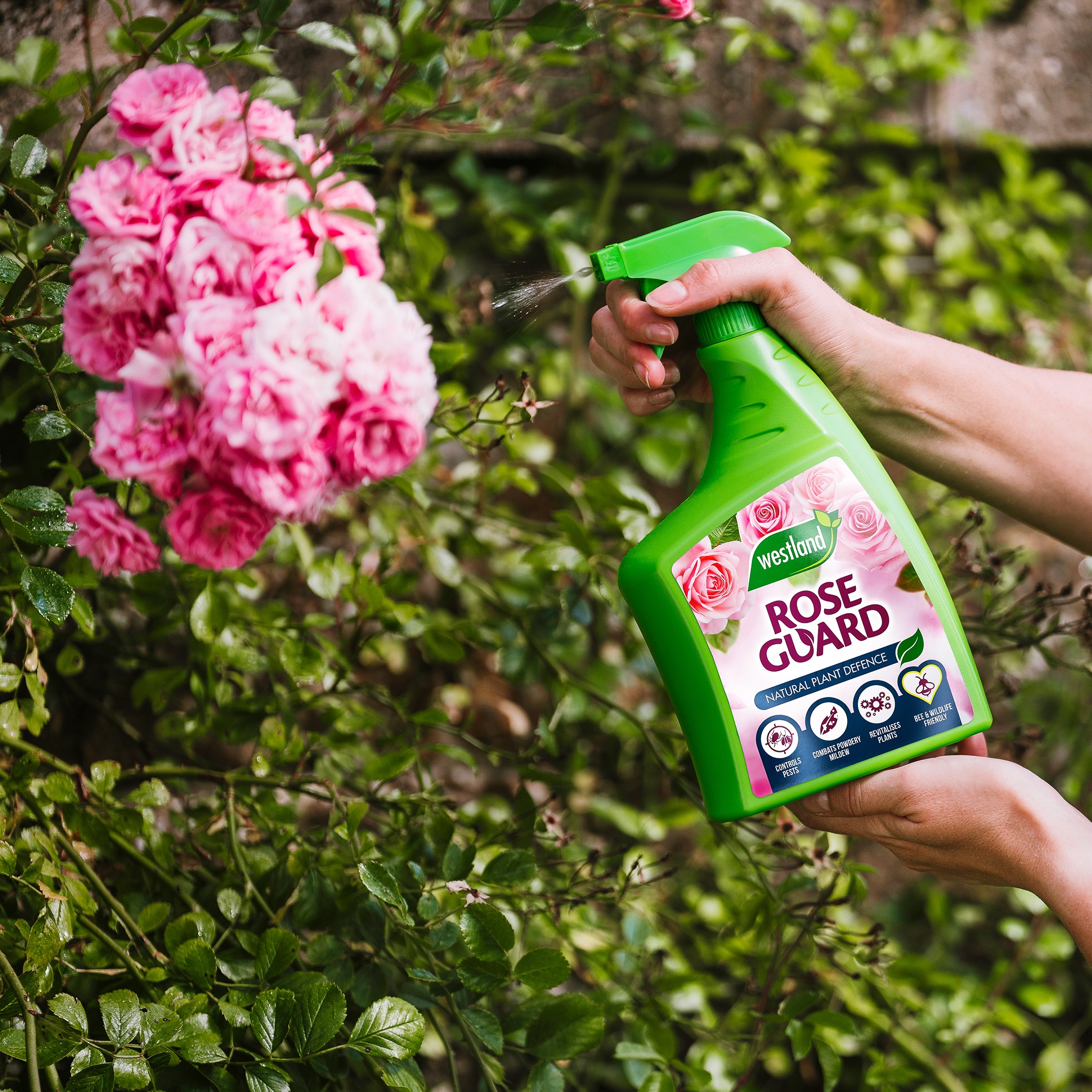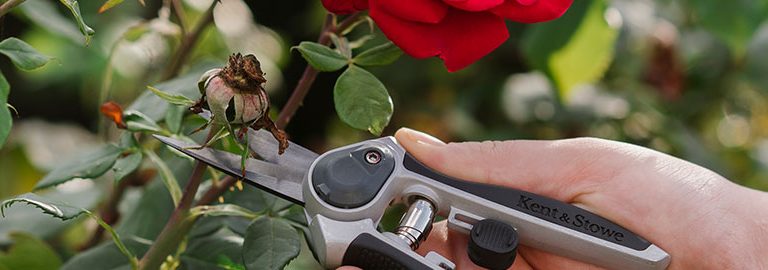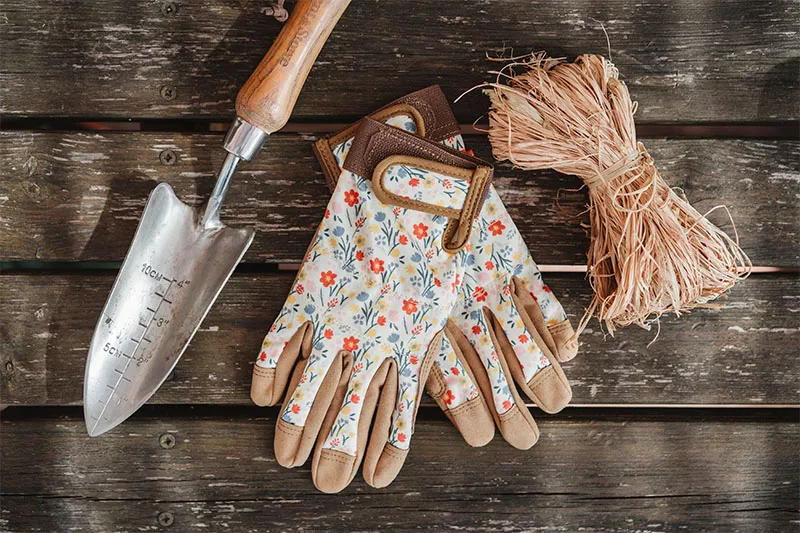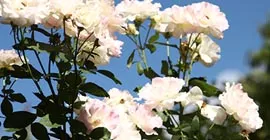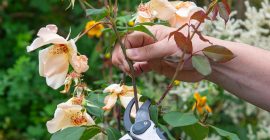If you’re interested in how to care for roses, our comprehensive guide can help you each step of the way. Whether you’re growing from bare root or caring for a mature plant, you’ll learn how to keep your roses looking ravishing throughout the year.
Growing roses from bare root
When you receive your bare root rose, it’s very important to re-hydrate the roots before planting. This is because they’ve been in transit without any soil or moisture. Soak them for around 2 hours before you plan to plant them, but no more than 12. Dig a hole 40cm wide and 40cm deep, planting them in firmly. Also consider their position in the garden (and the same goes for repotting and transplanting!). Because they will need at least 6 hours of sunlight per day to thrive.
Planting roses
Choose a rose plant with at least 3 healthy, well-balanced stems. Submerge the container and the rose roots into a bucket of slightly tepid water. It is important to ensure that the root ball and the surrounding compost is thoroughly wet before planting. Decide where you want to plant the rose and dig a hole larger than the size of the root ball. It needs to be deep enough to plant the rose up to the base of the crown of stems and you need to allow enough room to add some compost too.
Loosen the soil at the base of the hole and around the sides with a fork to allow the roots easier access. Fill the base of the hole with Westland Rose Planting & Potting Mix. Remove the rose plant from the container and place the root ball of the rose into the hole, so that the crown is level with the top of the planting hole. Turn the rose around until its best side faces in the direction it is most likely to be viewed from. Fill in around the roots with Westland Rose Planting & Potting Mix, mixing this in with the surrounding soil. Pack the soil and compost mix around the root ball firmly, but do not compact too much. When the hole is refilled completely, firm the soil around the plant with the sole of your boots and water well.
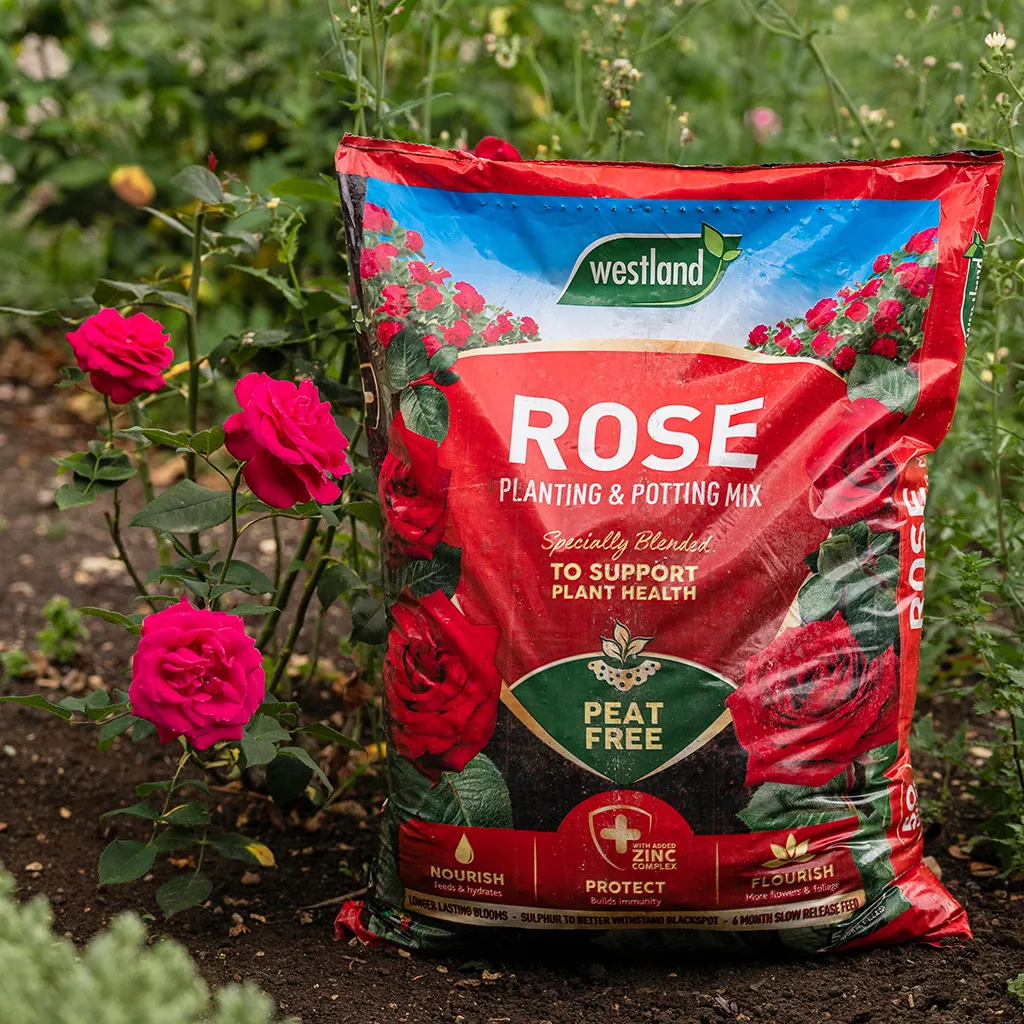
Pruning and deadheading roses
For most roses, it is best to prune roses during late winter usually between mid to late February. If it has been a particularly cold or long winter, wait until March or when the first signs of spring start to appear. Pruning in winter means there are only bare stems and little or no foliage. This makes it easier to shape the rose and to spot any areas that may be diseased.
Climbing and rambling roses should be pruned during late autumn or early winter after the flowers have faded. Shrub roses that flower once during the growing season should only be pruned in late summer after the flowering is finished. Shrub roses that flower throughout the season should be pruned in late winter.
Dead flowers can be cut back at any time during the summer months. During the flowering season, deadheading roses will encourage more blooms. Additionally, it will help to maintain the attractiveness of the plant for the rest of the season. After the first frost, stems will need to be trimmed to prevent them from snapping during the strong windy weather that autumn may bring. Ensure that rose bushes are not top heavy to protect them from being uprooted in strong winds. Crossing branches that could be damaged by rubbing together should also be trimmed back. Be very careful and don’t be too harsh as pruning can stimulate growth, and new growth may be damaged by freezing weather. Remember to wait until late winter to annually prune the rose harshly once the first signs of spring are upon us.
How to Prune Roses
What you’ll need…
- A sharp pair of secateurs, pruning shears or long-handled (gauge what tool you need depending on the size of the rose). We recommend Kent & Stowe Eversharp Secateurs.
- A thick pair of gardening gloves.
- Inspect the Bush: Examine the rose bush for spent blooms. Focus on those that have lost their vibrant color and are beginning to wilt.
- Remove flowers: Cut just above the closest leaves of the flowers that are wilting, and put the blooms in your green bin or compost heap.
- Locate the Bud Eye: For later on in the year, pruning your roses becomes a bigger priority. Look for a healthy bud eye located just above the first set of five leaves. The bud eye is where new growth will emerge. This is where you’ll make your cut.
- Cutting Technique: Holding your secateurs or snips at a slight angle, make a clean cut about ¼ inch (6 mm) above the bud eye. Cutting at an angle helps prevent water from pooling on the cut, reducing the risk of disease.
- Collect Trimmed Flowers: Place the trimmed flowers in your container. These can be discarded or used for decorative purposes indoors.
- Repeat the Process: Continue inspecting the rose bush and deadheading spent blooms throughout the growing season. Regular deadheading encourages new blooms to flourish.
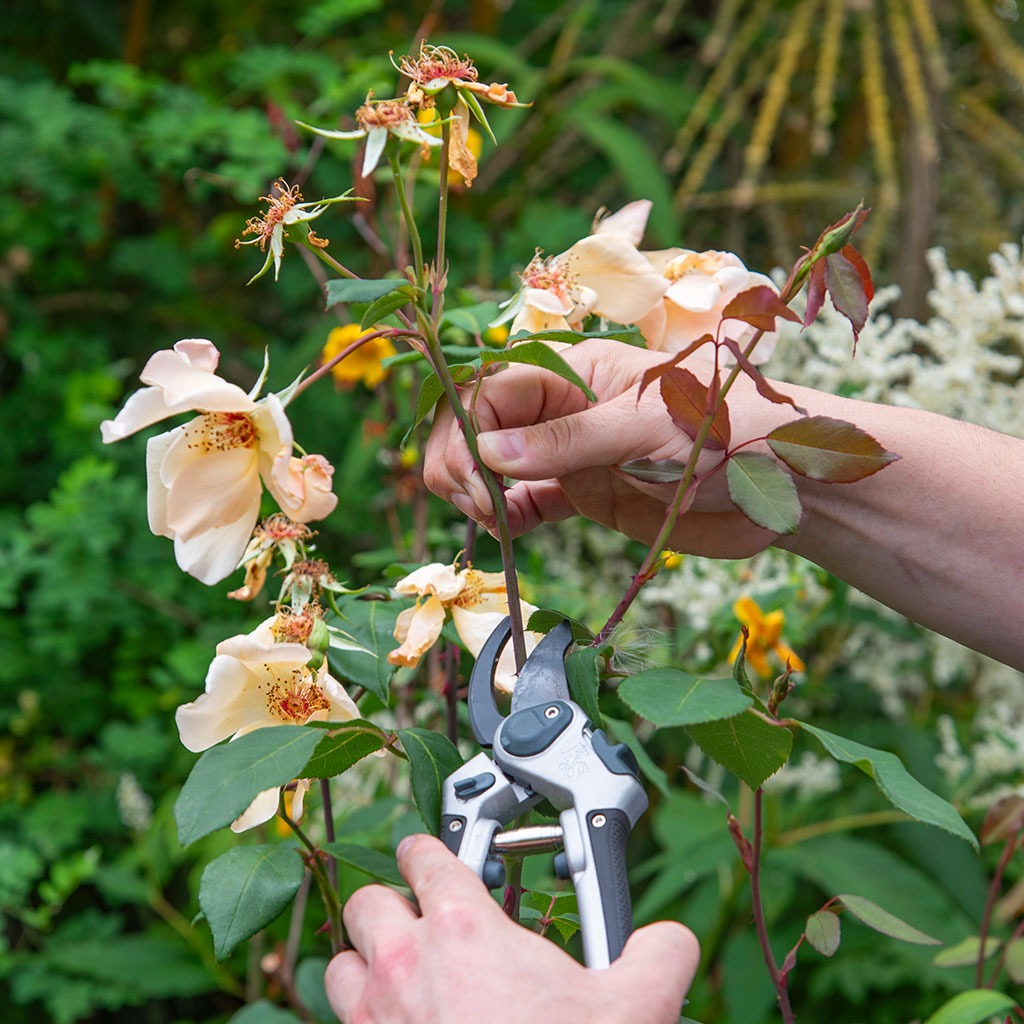
Additional Tips
- Feed Regularly: To support healthy growth and continuous flowering, feed your roses with Westland Rose High Performance Liquid Plant Food It is also a good idea to mulch the soil with garden compost or manure to give the plant its needed boost of nutrients at the start of the growing season. Throughout the season use Westland Rose 2 in 1 Feed & Protect to protect from pests and keep your blooms looking beautiful.
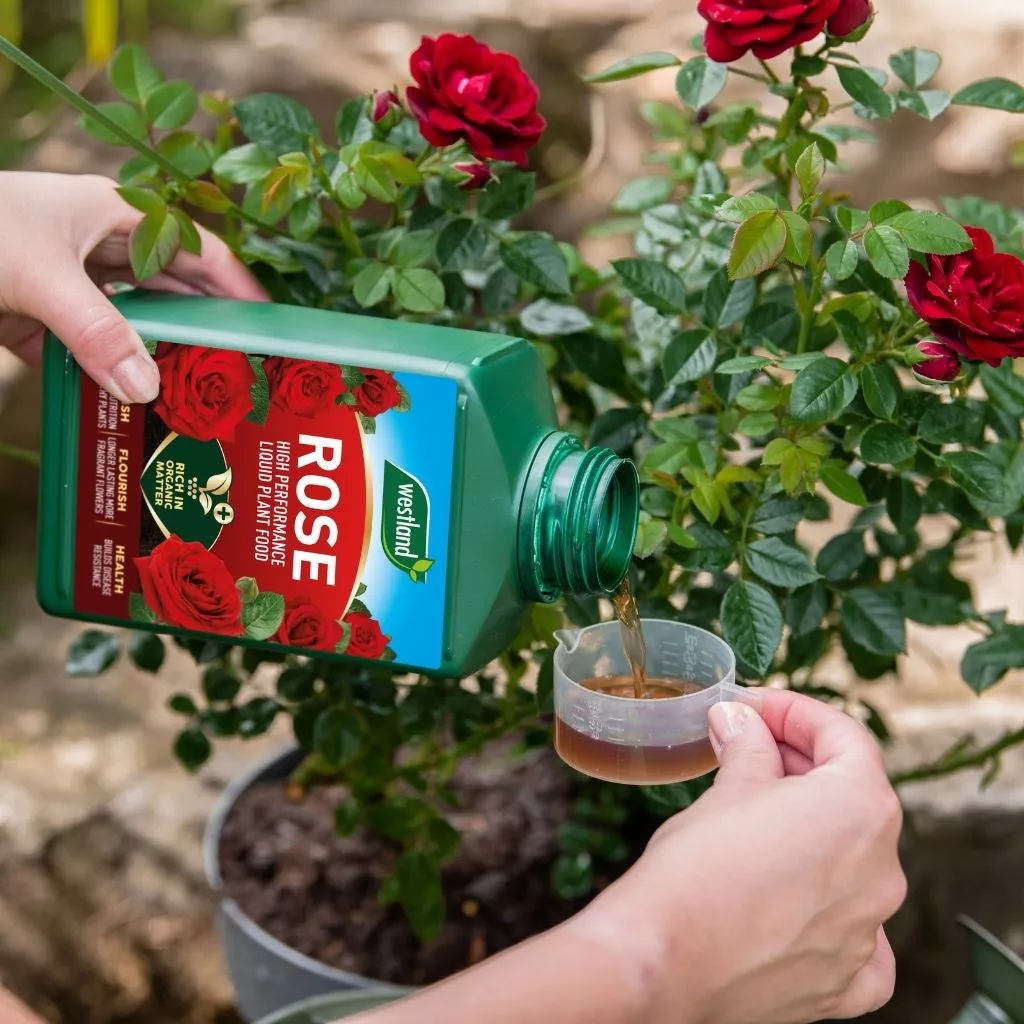
- Hydration: Roses require adequate water to thrive. Be sure to water your plants deeply, allowing the soil to dry out slightly between waterings.
- Mulching: Apply a layer of mulch around the base of the plant to retain moisture and prevent weed growth.
- Prevent Pests & Disease: Use a bug spray like Rose Guard preventatively or at first sign of pests or disease. You can use this all year round. It will help control pests such as aphids, whitefly, spider mites etc. as they won’t develop resistance. This spray will also combat powdery mildew and will breathe new life into your roses giving them instant foliar nutrition as well as improving the leaf health and colour.
